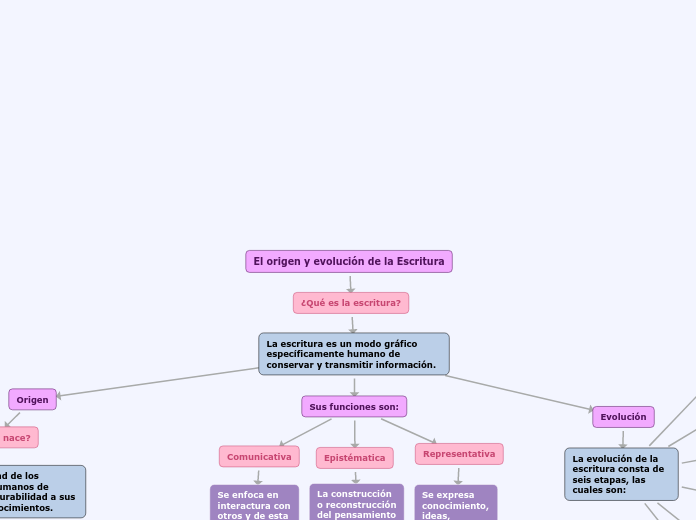Textos sagrados del Taoísmo y Sijismo
To name your story, you have to think about the overall message and what you want your audience to understand from the story. Also, make it relevant and easy to remember.
Taoismo
The middle of the story is where you add layers of complications that will lead to the end. Reveal more about the character's journey. Did their personality go through changes? How did they overcome the challenges? And as you build up the story’s central conflict, make it more personal to that character. Also, from the middle act, you have to lead into the final act.
Textos
There wouldn't be any tension and excitement in your story if there weren't any obstacles in your character's way.
Tao Te Ching (LAO-TSE)
A story is nothing more than a character overcoming a series of difficulties to reach the desired goal. Obstacles usually create suspense and conflict. In overcoming obstacles, there is growth: weak becomes strong; hatred turns into love; sadness into happiness; wrong into right; lies into truth; or evil becomes good.
See a few examples below:
- stopping a meteor
- finding a killer
- finding love
‘el camino’, ‘virtud’, o ‘poder’
El ying y el yang
Your character(s) need(s) motivation in order to solve the challenge(s).
Principios
Secondary characters might also have motives that lead them to cross paths with the main character or which might trigger them to help the main character.
En el yin hay yang y en el yang hay yin.
El yin y el yang pueden transformarse en sus opuestos.
El yin y el yang se consumen y generan mutuamente.
-El yin y el yang pueden subdividirse a su vez en yin y yang.
El yin y el yang son interdependientes.
El yin y el yang son opuestos.
¿En que consiste?
Each story has a main character and that character usually needs to solve a problem or challenge. The character's challenge is the one that creates tension throughout the story.
es una tradición filosófica y religiosa de origen chino la cual enfatiza vivir en armonía con el tao "camino"
In most stories, there are 3 challenges. The number 3 is a mystical number symbolizing completeness. Try to come up with interesting challenges with which your character needs to struggle.
See a few examples below:
- turns into a werewolf at night
- is sent back in time
principio de unidad absoluta
Filosofia China
Sijismo
In the beginning of the story (or the exposition), you will need to introduce the setting and characters. You might also want to introduce the main conflict. This part of the story is important because it gives the reader necessary background information and maybe even a first insight into a character’s personality.
Textos y creencias
The setting (time & place) of a story can change throughout the plot.
Gurú-grant-sahib
The time of the story can also change. It can describe the event of a single day or can include an entire year's plot. Anyway, don't forget to mention it.
fue escrito por los propios fundadores de la religión, a diferencia de los libros sagrados de otras grandes religiones
Las cinco K
Your story can take place wherever your imagination will take you to.
For example: in an elevator, in an enchanted forest, etc. Don't forget to give details of the environment each time the setting changes, otherwise, the story can be confusing. Also, mention the seasons as each of them has unique weather and events.
Kirpan
espada ceremonial
Kacha
ropa interior de algodón, con forma de bóxer
Kara
un brazalete metálico
Khanga
un pequeño peine de madera para recogerse el pelo
Kesh
pelo largo sin cortar
¿En que consiste
Characters are essential to a good story. Usually, the protagonist(s) is/are the most affected by the plot. Introduce a character by focusing on their actions, interests, and occupation, as the physical appearance doesn't make a difference in most cases.
el sijismo consiste en la creencia en un único dios y en las enseñanzas de los Diez gurús del sijismo, recogidas en el libro sagrado de los sijs, el Gurú Granth Sahib.
Type in the name of your character.
tradiciones hindúes
Which traits best describe the character's personality? Choose more if necessary:
introvertedloyalkindindependentquick-thinkingadventuresomeidealisticsweet-naturedcalmrisk-takercreativewittystrictfussyweirdclumsyharshaggressivecarelessclingingcowardlycrueldeceitfulimpulsiveOther
origen musulmán
Choose the type of your chacter:
Protagonist (main character)Antagonist (main character's opponent)Flat (stereotypical character)Round (his/ her personality develops throughout the story)Static (doesn't evolve as a person throughout the story)Dynamic (dramatical change in personality)Confidant (the main character trusts him/ her)Foil (contrasting character who enhances the personality of another character)Other










